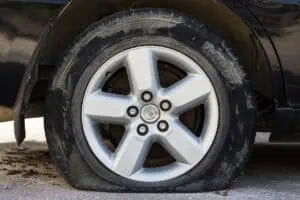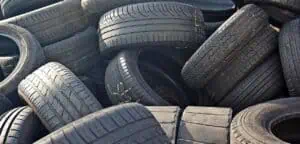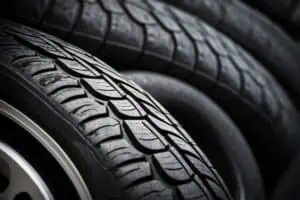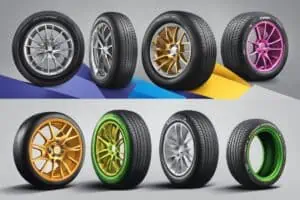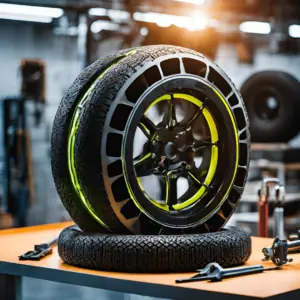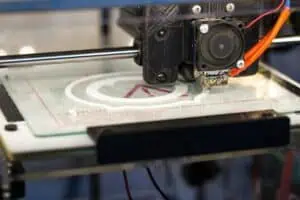The automotive industry is on the brink of a revolution, and at the forefront of this change are 3D printed tires. These
innovative products are set to transform not only how we think about tire manufacturing but also how vehicles perform
on the road. In this article, we’ll explore the world of 3D printed tires, comparing them to traditional tires and
examining their potential impact on the automotive sector.
The Evolution of Tire Manufacturing: From Rubber to 3D Printing
To understand the significance of 3D printed tires, we first need to look at the traditional tire manufacturing process.
For over a century, tire production has followed a similar pattern, relying on rubber compounds and complex molding
techniques.
Traditional Tire Manufacturing: A Time-Tested Process
The conventional tire manufacturing process involves several key steps:
- Compounding: Rubber is mixed with various chemicals and reinforcing agents to create a specific compound for
different parts of the tire. - Extrusion and Calendering: The rubber compound is shaped into various components like the tread, sidewalls,
and inner liner. - Cutting and Shaping: Fabric and steel components are cut to size and shape for reinforcement.
- Assembly: All components are brought together on a tire-building machine, creating the “green tire.”
- Vulcanization: The green tire is placed in a mold and subjected to heat and pressure, causing a chemical reaction
that gives the tire its final shape and properties. - Inspection and Testing: Rigorous quality control measures ensure each tire meets industry standards.
This process, while refined over decades, has limitations in terms of customization, material waste, and production
time. Enter 3D printing technology, which is set to address these challenges head-on.
The Role of 3D Print Rubber in Modern Tire Manufacturing
The ability to 3D print rubber with precision has opened up new possibilities in tire design and manufacturing. This
technology allows for the creation of complex structures and patterns that were previously impossible or impractical to
produce using traditional methods.
How 3D Printed Tires Are Made
The process of creating 3D printed tires differs significantly from traditional manufacturing:
- Design: Engineers use advanced CAD software to create detailed 3D models of the tire, including intricate
internal structures. - Material Selection: Specialized rubber-like materials are chosen, often proprietary blends developed for 3D
printing. - Printing: The tire is printed layer by layer using large-scale 3D printers. This process can take several hours but
requires minimal human intervention. - Post-Processing: Once printed, the tire may undergo additional treatments to enhance its properties.
- Testing: Like traditional tires, 3D printed tires undergo rigorous testing to ensure they meet safety and
performance standards.
This innovative approach to tire manufacturing offers several unique advantages:
- Customization: Tires can be designed for specific vehicles, driving conditions, or even individual drivers.
- Reduced Waste: The additive nature of 3D printing means less material waste compared to traditional
- manufacturing.
- Complex Geometries: 3D printing allows for the creation of intricate internal structures that can enhance
- performance.
- Rapid Prototyping: New designs can be tested and refined quickly, accelerating the development process.
Exploring the Potential of 3D Printed Airless Tires
One of the most promising developments in this field is the creation of 3D printed airless tires, which could
revolutionize vehicle performance and safety. These tires, also known as non-pneumatic tires, don’t rely on air pressure
to maintain their shape and support the vehicle’s weight.
Find out more on Airless Tires Are Revolutionizing The Roads to see how they’re making a big impact.
Advantages of Airless 3D Printed Tires:
- Puncture-Proof: Without air, there’s no risk of flats or blowouts.
- Consistent Performance: The tire’s properties remain stable over time, unlike air-filled tires that can lose
pressure. - Reduced Maintenance: No need for regular air pressure checks or refills.
- Sustainability: Many designs allow for easy recycling or retreading of the tread portion.
Companies like Michelin and Hankook are at the forefront of this technology, with concepts like Michelin’s VISION and
Hankook’s i-Flex showcasing the potential of airless 3D printed tires.
3D Printed Tires vs. Traditional Tires: A Comparative Analysis
To understand the full impact of 3D printed tires, let’s compare them to their traditional counterparts across several
key factors:
- Performance:
Traditional Tires: Well-understood performance characteristics, proven in various conditions.
3D Printed Tires: Potential for improved performance through customized designs and materials. - Durability:
Traditional Tires: Generally durable, but susceptible to punctures and wear.
3D Printed Tires: Can be designed with enhanced durability and even self-repairing capabilities. - Customization:
Traditional Tires: Limited options, mostly in tread patterns and rubber compounds.
3D Printed Tires: Highly customizable, can be tailored to specific vehicles or driving conditions. - Production Efficiency:
Traditional Tires: Well-established, high-volume production processes.
3D Printed Tires: Currently slower for mass production, but with potential for on-demand manufacturing. - Cost:
Traditional Tires: Generally more affordable due to established production methods.
3D Printed Tires: Currently more expensive, but costs are expected to decrease as technology advances. - Environmental Impact:
Traditional Tires: Significant material waste in production, challenges in recycling.
3D Printed Tires: Reduced waste in production, potential for more sustainable materials and easier recycling.
The Journey of 3D Printed Tires: From Concept to Reality
The history of 3D printed tires is relatively short but filled with rapid advancements. Let’s trace the key milestones in
this innovative technology:
- 2012: Michelin presents the concept of 3D printed tire treads for retreading.
- 2017: Michelin unveils the VISION concept, an airless, connected, and 3D printed tire.
- 2019: Goodyear introduces a 3D printed concept tire for autonomous vehicles.
- 2020: The automotive 3D printed tires market begins to gain significant attention from investors and industry analysts.
- 2022: NEXEN TIRE implements AI and 3D printing technology, reducing tire development time by 70%.
- 2023: Hankook advances its i-Flex non-pneumatic tire concept using 3D printing technology.
These developments showcase the rapid progress in 3D printed tire technology, moving from concept to practical applications in just over a decade.
Innovations in Cycling: 3D Printed Bike Tires
The impact of 3D printing in tire technology extends beyond automobiles. In the cycling world, 3D printed bike tires are
beginning to make waves. These tires offer cyclists the potential for:
- Customized tread patterns for different terrains
- Optimized weight distribution for improved performance
- Enhanced puncture resistance through innovative structures
While still in the early stages, 3D printed bike tires could revolutionize cycling, especially in professional racing where
every advantage counts.
Michelin’s Pioneering Efforts in 3D Printed Tires
Michelin’s investment in 3D printed tires showcases the industry’s commitment to this groundbreaking technology. The
company’s VISION concept, introduced in 2017, represents a bold step towards the future of tire technology. Key
features of Michelin’s approach include:
- Airless design for improved safety and reduced maintenance
- Use of biodegradable materials for enhanced sustainability
- Ability to “recharge” the tire by 3D printing new tread patterns as needed
Michelin’s efforts demonstrate how 3D printing can address multiple challenges in tire design and usage
simultaneously.
Environmental and Economic Impacts of 3D Printed Tires
The advent of 3D printed tires marks a significant shift in automotive technology, offering unprecedented customization
and efficiency. But what does this mean for the environment and the economy?
Environmental Considerations
Research into biodegradable 3D printed tires is paving the way for more sustainable transportation solutions. The
potential benefits include:
- Reduced material waste in manufacturing
- Use of more environmentally friendly materials
- Easier recycling and retreading processes
- Potential for reduced rolling resistance, leading to improved fuel efficiency
A study by Virginia Tech suggests that 3D printing technology in tire retreading could reduce carbon emissions by up to
800 metric kilotons annually.
Economic Implications
The economic impact of 3D printed tires could be substantial:
- Potential for localized, on-demand production, reducing transportation costs and import dependencies
- New job opportunities in advanced manufacturing and design
- Reduced long-term costs for consumers through longer-lasting, more efficient tires
- Disruption of traditional tire manufacturing supply chains
While the initial costs of 3D printed tires are higher, the long-term economic benefits could be significant as the
technology matures and scales.
Future Outlook and Challenges
As we look to the future, the potential of 3D printed tires seems boundless. However, several challenges need to be
addressed:
- Scaling Production: Current 3D printing processes are slower than traditional manufacturing for mass
production. - Material Development: Continued research is needed to develop materials that can match or exceed the
performance of traditional rubber compounds. - Regulatory Approval: New tire designs and manufacturing processes must meet stringent safety standards.
- Consumer Acceptance: Educating consumers about the benefits of 3D printed tires will be crucial for widespread
adoption. - Integration with Vehicle Systems: As tires become more high-tech, ensuring compatibility with various vehicle
systems will be essential.
Despite these challenges, the automotive 3D printed tires market is poised for significant growth. Industry experts
predict that as technology advances and costs decrease, 3D printed tires could become a common feature on vehicles
within the next decade.
The Road Ahead for 3D Printed Tires
The emergence of 3D printed tires represents a significant leap forward in automotive technology. By offering enhanced
customization, improved sustainability, and the potential for better performance, these innovative tires are set to
transform the way we think about and use one of the most fundamental components of our vehicles.
As research continues and technology advances, we can expect to see 3D printed tires playing an increasingly
important role in the automotive industry. From improving safety and performance to addressing environmental
concerns, the potential benefits are substantial.
While challenges remain, the progress made in just a few short years is remarkable. As we move forward, 3D printed
tires may not just change how we drive, but also contribute to a more sustainable and efficient transportation future.
The road ahead for 3D printed tires is long and promising, and it’s a journey that’s only just begun.
sources:
https://www.fabbaloo.com/news/goodyear-michelin-and-3d-printed-technology
https://www.uniontech3d.com/exploring-the-advancements-in-3d-tire-printers.html
https://www.uniontech3d.com/unraveling-the-technological-intricacies-of-3d-printed-tires.html


